In this era of unprecedented compatibility and transparency between viewers and artists, the artists presented here are at the forefront of a dynamic facet of contemporary art photography that intentionally speaks to the universality of digital image capturing and sharing which permeates daily life. Through their work, we experience the physical implications of operating in this utterly new media environment, where the origination, behaviour, and reading of photographs have been culturally upended, and we are invited into the experimental terrain that extends before our eyes.
Experimental Photography draws together six innovative contemporary American artists who are re-shaping photography’s 200-year history of experimentation with new ideas and processes. Their photographic practices include fusing analogue traditions and materials with pixel-based software and new printing and image-rendering technologies. Within a contemporary creative context, the material presence of photographs is an ever-changing experience – the scope of which is set well beyond the confines of artistic practice per se, and in the realms of Web 2.0 and the ‘cloud’ of networked images. This exhibition offers up a range of active and subjective choices made by artists to transform and translate images into tangible objects, harnessing the experimental potential of a collective ‘image environment’.
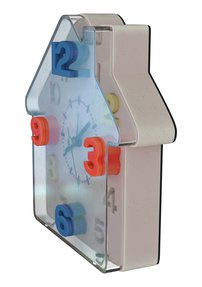
Asha Schechter
Asha Schechter’s artistic practice is set within the context of a networked, commodity-centric culture – where images simultaneously represent and reproduce the automated systems that govern the world. Shechter’s installation people who live in glass houses ♥ it 2 consists of vinyl works adhered directly onto the walls – a suite of strangely familiar and specific objects that seem to be drawn from domestic life float in the gallery space. The artist employed work-for-hire digital labourers to model these photographic-looking renderings of day-to-day objects as per his instructions, without the use of a camera. The lost-in-translation glitches in these supposed facsimiles of real objects that resulted from the online exchanges between the artist and digital makers, created end results that, like photography itself, fluctuate between factual and fictional representations.
“ I am interested in the lifespan of images. I am interested in how an image comes into being, what kind of work it does, how it ages, and when the language it speaks stops being intelligible. Although a camera is not used to make these works, they are based on real objects and are grounded in the language of photography in their use of lighting, scale shift, and cropping. The rendered dirt and scratches on the objects’ surfaces evoke the temporal aspect of photography, implying a future where the real thing decays while its image is forever frozen. I think of these works as liberated – free from the tyranny of the rectangle and a permanent material state, floating in indeterminate and temporary space. ”– Asha Schechter
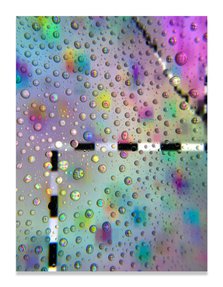
Valerie Green
Valerie Green’s Screen Saver series considers the space of the digital screen by examining the interplay between the virtual and the tangible. Green directly photographs her computer, tablet or smartphone screen, upon which layers of her own images are displayed. At stages throughout her cyclical process, she sprays liquid screen cleaner onto the surface of any one of these devices. The drops, acting akin to a field of lenses, physically amplify and distort the pixels of the glowing image, creating vibrantly coloured abstractions tensely held in space between the real and the virtual, where image, process, medium and optics converge.
“ I’m exploring the idea of interface as it relates to photography, technology, and generational shifts. Through many layers, my work seeks to challenge expectations of actuality and virtuality as I move images fluidly between digital and analogue photographic processes. ”– Valerie Green
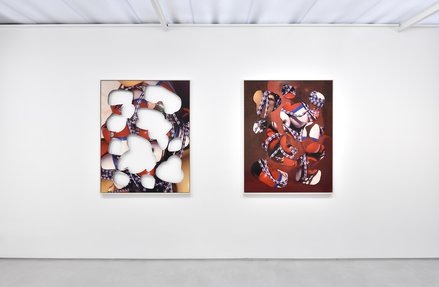
Kate Steciw
Kate Steciw creates sculptural installations that push the boundaries of the conventional forms of photography, amplifying the ways in which digital processes create a new medium and vocabulary for image capturing. She manipulates images in Photoshop to create abstractions from her own and stock images. Steciw describes the JPEG as, 'not a tool of precision but rather of subjective storytelling', and harnesses this state of possibility and disruption into the production of her art. All of the works shown here are part of her ongoing Construction series – a title that speaks to the active processes of constructing and rendering works of art from essentially immaterial digital images. The hanging sculpture is composed of multiple image cut-outs, in both positive and negative form – such as hands, hats, and squiggles. Her floor-based, knotted soft sculpture is given its form by its continuous ‘skin’ of images. The five wall works make up the artist’s actions of digital gestures and flourishes in both form and content – emphasised by cut-outs and collage overlays within each frame – manifesting the fluidity and disconnections between ‘image’ and ‘object’ that define the digital age.
“ In a social system in which so much culturally relevant information is transmitted via images, it is in the form of images that we most often encounter the objects of our desire. Not only that, but due to the object’s origins in mechanical reproduction, it too behaves as an image... images and objects function as delivery systems for commerce-driven ideologies. That said, such systems are entirely reliant on context and composition and are fatally disrupted by even minor interventions. ”– Kate Steciw
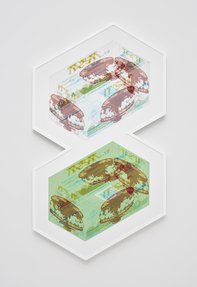
Brandon Lattu
Brandon Lattu’s recent works expand and reposition the idea of a photographic vision. An early adopter of digital and 3D imaging technologies as creative tools, Lattu blurs the boundaries between human and algorithmic perception and the reading of images. His sculptural and photographic works recast the tenets of modern and contemporary art practice – of ‘giving form’ – through this technological lens. In the three works shown here, the artist constructs transparent, omni-directional representations of product packaging that, in their ‘Pop art-esque’ colouration and directness, simultaneously amplify and critique consumer culture. This is perhaps most acutely felt in his work Photoshop and Photoshop, which focuses on two early versions of Photoshop packaging, and the inherent cultural and physical anomaly of a branded package for a software product that has since transitioned to an entirely immaterial product while also becoming the default digital tool for image-making.
“ For too long, photography has relied on a failed mimicry of human vision. The chosen vantage point and bounded rectangle of a photograph can, like other aspects of representation, be used as political tools that fulfill the desires of some while controlling others and surveying all. I try to get beyond the camera’s dependence on a single line from the photographer, through the device, to the subject, by recording omnidirectionally instead. Vi- sion and representation are surprisingly malleable; if we are not fixed on a preformed model of vision, we can create a new model that is relevant to how life is lived now. ”– Brandon Lattu
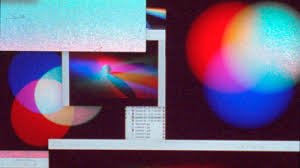
Victoria Fu
Victoria Fu’s projected video Télévoix combines analogue and digital image sources and effects, flattening the hierarchies between historical and contemporary default image-making processes. Pictures are multiplied and layered, disorienting our sense of space and vantage point, shifting between the real and representation. In her work, Fu shows the experimental possibilities of embracing hybridity between the histories and new digital defaults of photography and film, to create an expansive creative field. Simultaneously, Télévoix is strangely personal and also familiar – as if we are engulfed into the manual processes of layering light, liquids, colours and materials, traversing desktop files, and participating in the experimental journey through the video’s duration.
“ The unseen layers beneath digital post-production; the slickness of image surfaces; software updates; image feeds – all combine to create the sense of ‘obsolesence’ in our capitalistic image world. When our human hands work with analogue film, accidents are there, waiting to happen. Maybe making images is not very interesting when they are whole, perfect, and fully realised. There is something radical about the glitches we make with our hands from within the seemingly mammoth and impenetrable image environment in which we labour. ”– Victoria Fu
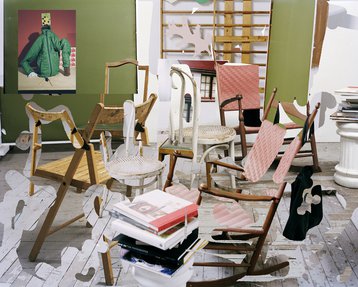
Lucas Blalock
Lucas Blalock brings a unique artistic approach to the exploration of photographic experimentation in a digital age. The artist’s Making Memeries installation consists of six photographs printed on fabric, with his signature approach to picture-making, where the evidence of his labour – studio apparatus, props and digital tools – is intentionally laid bare. Each large photograph is activated via an app, downloaded to mobile phones or tablets. Augmented Reality technology expands the experience of each photograph using sound, 3D renderings and animation. Scanning across the surface of each picture, the user’s movement and screen vantage point transforms the physical image object, extending and deepening our attention of each photograph. The work is an interactive exercise in visual association, imagination and understanding that invites us to question what is real and what is not in the world around us.
“ Photographs, for all their flatness, imply a genuinely heterogenous space; 2D and 3D, a surface plane and a space within...the photograph is at a far lower level of abstraction than the image, and because of this, we can, as viewers, be persuaded to struggle to work back through this abstraction, try to come to terms with the world pictured. The photographer is not best understood as a cataloguer of fact, nor a purveyor of reportage, but instead is participating in this centuries-old activity of drawing the world closer. ”– Lucas Blalock
Related Conversations
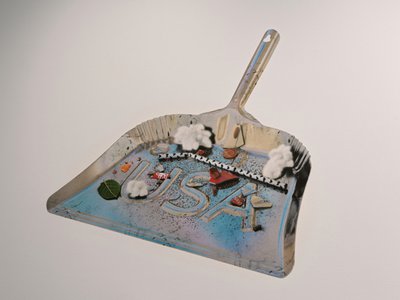
Asha Schechter
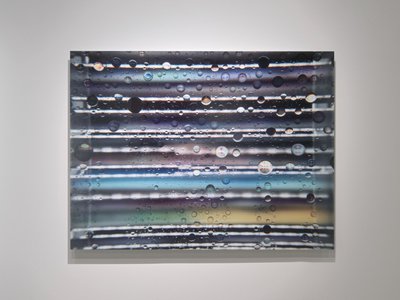
Valerie Green
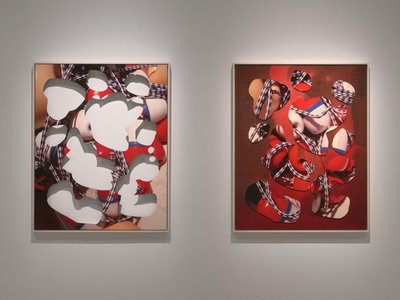
Kate Steciw
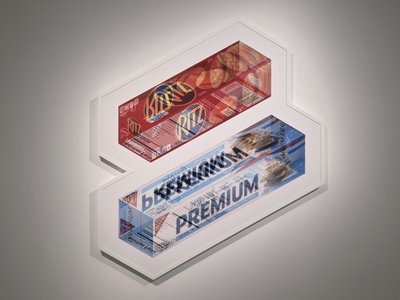
Brandon Lattu
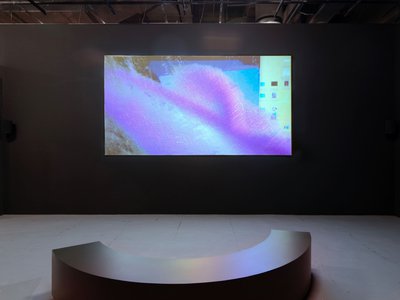
Victoria Fu
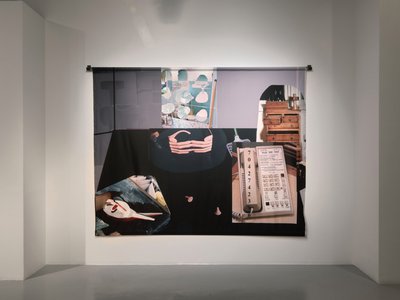
Lucas Blalock